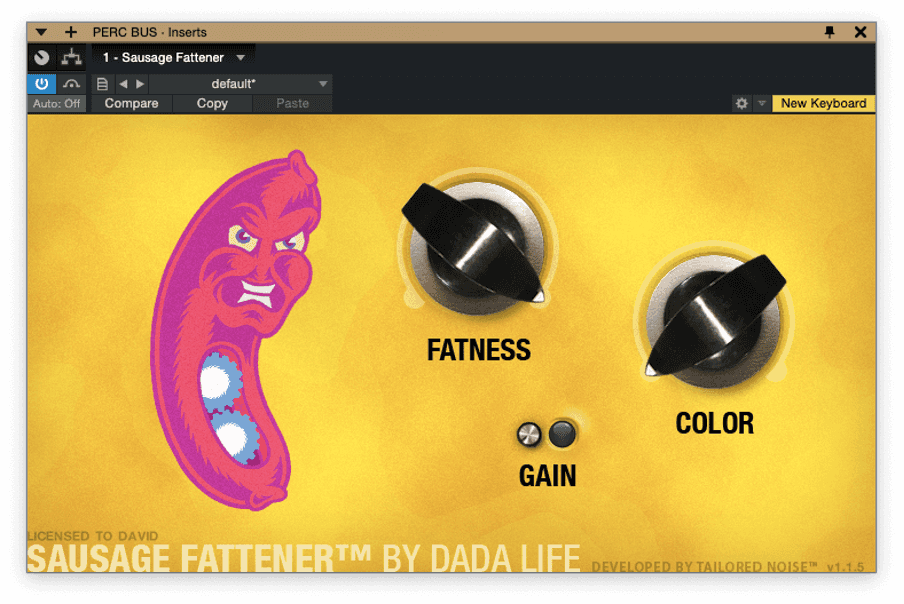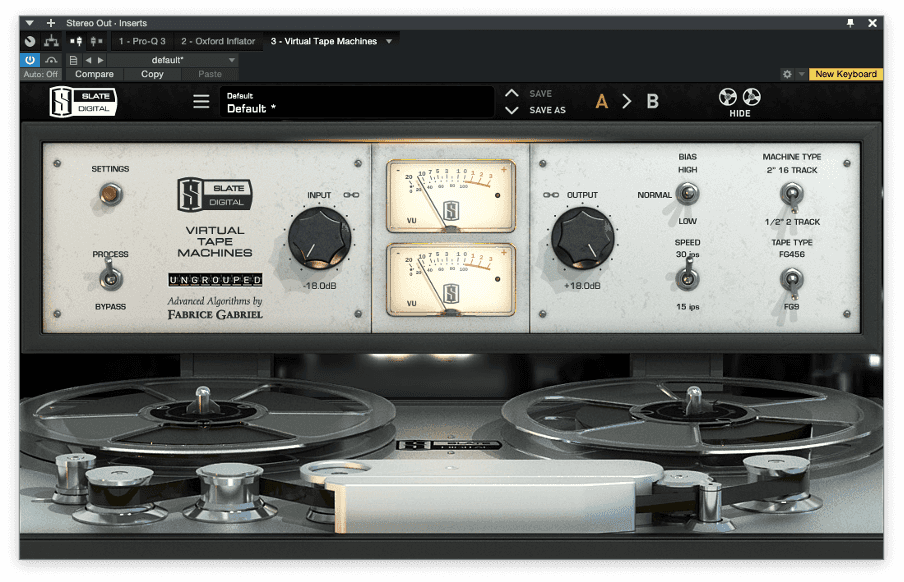has been added to your cart.

Deconstructing Mark Knights New Sample Pack
Today we'll be deconstructing Mark's all new sample pack, 'Toolroom Trademark Series - Mark Knight Vol. 4' to demonstrate some of the unique methods we use when getting creative with loops.
Creating The Lead Hook
To kick things off, we wanted to to create a lead hook that we could build the rest of the loop around. We could have pulled a synth loop straight out of the pack, but in the spirit of being creative, we went for a different approach. On searching through the pack for ideas, we came across TA_MK4_GUITAR_LOOP_APPEAL_124_Fm, a funky guitar loop with tonnes of groove, and an interesting rhythm, so we loaded it into the project.

Next up, we loaded the audio into Melodyne, which allowed us to convert the sample into MIDI information, giving us the freedom to go in any direction.
We then dragged the resulting MIDI onto an instrument channel with a fresh instance of Kontakt, now all we need is an interesting synth sound to form the basis of our lead.
Diving back into the sample pack, we found a super cool rave stab sound, titled, TA_MK4_SYNTH_LOOP_KNIGHT_STAB_124_Fm
After dragging the sample into Kontakt, we set the start and end points of the loop around a single hit, causing the instrument to behave like a one-shot.
We then set the root note to F to match the key of the original sample.

From this point, we transposed the MIDI up 3 semitones, putting the synth lead in the key of G#m. This will be the musical key of the production.

Finally, we raise every third and sixth notes by 5 and 3 semitones respectively, which gives the synth some movement, as well as a satisfying melodic structure.

Designing The Perfect Kickdrum
It’s good to think of kickdrums as having two separate parts: the low-end and the high-end. As usual, we looked for a kick that had just the right low-end character for the lead to sit on top of. Digging through the pack, we found a loop titled TA_MK4_KICK_LOOP_LOSS_124 that provided an adequate low end.
Next, we opened up Fabfilter’s Pro-Q 3 plugin, and rolled off the top end of the kick sample using a low-pass filter at 200Hz with a slope of -24dB/Oct.

At this point, we had a nice round low-end, but we still needed a kick sample with a nice top end to provide some higher frequencies. On auditioning some kick samples from the pack, we eventually settled with TA_MK4_KICK_LOOP_WARP_126
On blending the two together, the final kick drum sounds like this:
And all together, the kick and lead hook sound like this:
Designing The Bassline
Finding the perfect relationship between the lead hook and the bassline is the key to a hard hitting club record.
That said, if you’re struggling to find the right loop that’s in the same key as your track, it’s extremely easy to make any bass loop fit by simply pitching it until it works with the lead.
We found that pitching up TA_MK4_BASS_LOOP_GOLIATH_126_Fm perfectly complemented the synth, as they shared a similar rhythm.
All we had to do was transpose the MIDI up by 1 semitone, to put the bass in the correct key.
Next up, we sidechained the bass to allow more room for the kick to punch through, whilst also accentuating the groove.

At this point, we were happy with our bassline, however, during our auditioning process, we came across a second loop titled TA_MK4_BASS_LOOP_LIGHTS_126_Gm, that somehow added more depth and character to the existing bass. Traditionally this isn’t something we would do, but on this instance, it worked! We removed every 3rd and 4th note of the 1 bar loop to add more variation to the groove.
Finishing Off The Melodic Elements
Now we have the core elements down (lead, kick and bass), it’s time to consider some processing to sweeten up our sounds.
First off, we added some light opto compression using the Waves CLA-2A, which effectively evened out the dynamics of the synth lead.

Next, we applied a short echo and spacey vintage style reverb using SoundToys EchoBoy.

And finally, we added Valhalla’s VintageVerb to the bus, which totally gave our synth a new lease of life.

We still felt the arrangement was a little bare bones, so we checked back into the sample back and came upon a synth loop titled TA_MK4_SYNTH_LOOP_WAX_125_Am which we added to the arrangement.
We isolated the inaugural stab, and pitched it down a semitone to put us in key. Next, we decided to add a transient shaper, as we wanted to shorten the sustain, and in turn tightening up the sample, placing it in a better-defined space.

At this point, the sample was still a little dry, so we opted for some relatively heavy, colourful reverb in the form of QuikQuak’s Fusion Field, which effectively blended the stab into the background.

Finally, at the end of the 4 bar loop, we chose to reverse the sample, as a way to cause a distinct end to the section, musically speaking.
At this point, we still needed to tie all the elements together, and what better way of doing that than with nice toppy organ loop – we plucked out TA_MK4_SYNTH_LOOP_HAMMOND_ORGAN_124_A#m – creating a nice melodic bed for the whole arrangement to sit on.
Adding Percussion
Next up, we pulled a really unique perc loop from the pack titled TA_MK4_PERC_LOOP_FADE_126
Using Slate Digital’s Gate:Drums, a module in the Virtual Mix Rack, we isolated the percussion element by filtering out unwanted frequencies. This produced a percussion loop that was totally different to its original form, one that we weren’t able to create simply by cutting the sample manually.

Next, we applied a simple low pass EQ move that removed the hat from the loop.

At this stage, we wanted to breath a little more life in to the percussion loop, so we opted for some heavy saturation and compression using Soundtoys Decapitator, which succeeded in filling out the mix.

Tops
At this point, the idea was in full motion, however we still had to compensate for a lack of top end information in the mix.
Digging through the pack once again we found a great tops loop titled TA_MK4_TOP_LOOP_CHOKE_125, we chopped out the kick and clap, and added a high pass filter once again, this time leaving us with the high end elements, i.e the hats and shakers.
Next, we added a dub-style delay at 8th dotted notes with a medium feedback using AudioDamage Dubstation. This gave the tops super off-kilter vibe that worked amazingly well within the context of the mix.
We also added an auto-panner in the form of Melda Productions MAutoPan, which as expected widened the shakers to create a little more interest and movement.
Finally we pulled TA_MK4_TOP_LOOP_INTERFACE_126 straight out of the pack, and into the project without any real processing, to finish off the loop.
Hats & Claps
As for the hat element, we went for a loop titled TA_MK4_HAT_LOOP_GRAZE_125 which simply needed a slight volume adjustment.
The clap loop we chose was titled TA_MK4_CLAP_LOOP_MACK_125 and again, we really didn’t feel that any additional production needed to be done here, not something that usually happens, but in this case, many of the samples were already suitably polished, straight out of the pack!
Finishing Touches
For the final mastering stage, our main efforts came with some light compression and saturation, in place simply to glue it all together.
Sausage Fattener is a great way to add the final sparkle to a mix, we turned the ‘fatness’ control to 100% and brought the gain down all the way.
From there it was merely a case of doing some final level adjustments, and we were there.

A touch of tape-style saturation from Slate Digital’s Virtual Tape Machine brings the mix to it’s final form.

Toolroom Trademark Series – Mark Knight Vol. 4 is out now on Splice! The quality of the samples made it a real breeze to put this super interesting idea together, so if you’re keen to jump in the studio to and work on a some new ideas akin to this one, then you can download the sample pack here.

Login
X
